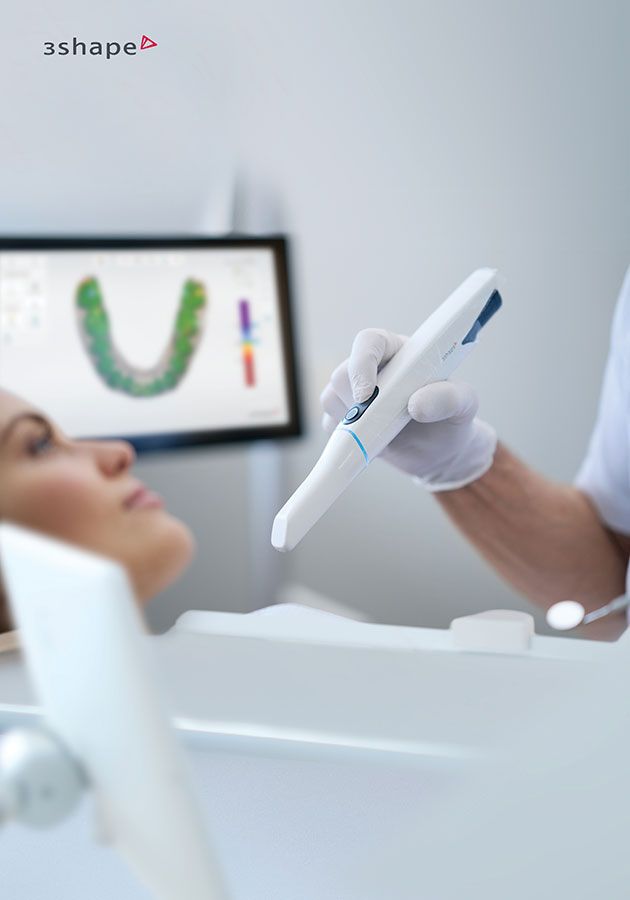Danish scanner capturing 2000 images per second
Isak Mottelson is a senior scanner developer at 3Shape. He works with scanner optimization for the award-winning 3Shape TRIOS intraoral scanner.
Danish trade magazine, Version2/Ingeniøren, spoke to him about his work and team at 3Shape – a team made up of experts in optics, mechanics, electronics, and software development. The following is an English translation of the article. The original Danish version of the story can be found here.
3Shape is revolutionizing dentistry with its scanner technology and 3D CAD modelling. Isak Mottelson is one of the mathematicians at the center of its work.
Maximizing scanner accuracy and precision is the goal for Isak Mottelson’s team. The more precise a 3D model of a tooth or row of teeth 3Shape's scanners deliver, the better it is for both dentists and patients. Since its launch at the Danish Technical University a little over 20 years ago, 3Shape has become a worldwide success.
It began with developing scanners and software for ear canal impressions and computer designing hearing aids. From there, 3Shape moved to the dental industry. Initially making scanners and software to help dental laboratories more efficiently design crowns, bridges, or braces from scans of plaster impressions.
Open wide and scan
Later, 3Shape moved directly into dental offices by creating an intraoral scanner. With this handheld device, the dentist could scan the patient’s dentition while the patient sat in the chair. Traditional silicone impressions were no longer necessary and could be removed from the process and replaced with digital 3D models.
These in turn could be digitally sent to the lab. The small scanner, which resembles an electric toothbrush, has revolutionized the way dentists work, making the process faster, more efficient, precise, and comfortable for patients.
Wireless and faster

Shape’s handheld scanner has since become the industry’s first wireless scanner - faster, lighter, and naturally more precise. But precision and accuracy cannot be achieved by itself, especially when the scanner needs to be able to send enormous amounts of data and point clouds through its system.
“Optics are crucial,” explains Isak Mottelson, a mathematician from KU and Caltech and senior scanner developer at 3Shape. The company recently launched its fifth generation intraoral scanner.
It is a so-called focus scanner, equipped with special optics containing a very narrow depth of focus which is moved back and forth by a motor in the scanner. This happens up to 20 times per second. This creates a large stack of images taken with a very narrow focus plane, which are then assembled into a 3D scan of the tooth or row of teeth.
“But even though the optics are some of the most advanced on the market, there is always noise/distortion in the data that comes in. For instance, the glass encasing the scanner’s tip can cause noise. To assemble the data into a good model and filter out the noise and interference, you need to understand your data very well,” says Isak Mottelson.
Typically, the scanner takes up to 2,000 pictures per second.
The experimental team
Previously, Isak Mottelson worked on speeding up the calculations around point clouds and 3D models by moving them to the computer's GPU. Now, he is working with one of Shape’s more experimental teams, which works with optimizing scanner data and new scanner technologies related to the TRIOS scanner.
This is done in close collaboration with experts in optics, mechanics, electronics, and software. “It’s super exciting and different from just working with software, where you sometimes feel like you're isolated in an ivory tower. In my new team, we have a research lab 10 meters down the hall. I can just walk down to the lab and check on the progress we’re making on challenges we may be facing.”
Edge Computing
According to Isak Mottelson, the TRIOS scanner is a textbook example of edge computing and its challenges. These include managing large data sets that must be partially processed de-centrally on the device, which is also wireless and battery powered. This means the device has clear limitations on bandwidth and power consumption. This can only be solved collaboratively and inter-disciplinarily.
“Fortunately, it’s not hard to convince our management when we find something we think is worth pursuing. That’s enormously valuable. We work in a domain with many exciting problems. For instance, there will always be errors in the data we process.